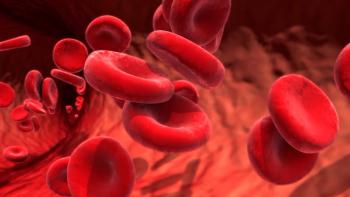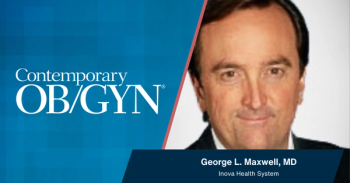
Excess embryos reduced by optimizing fresh donor oocyte use
Limiting the number of fresh donor oocytes fertilized can reduce excess embryo creation while maintaining high live birth rates.
Fertility clinics and patients can limit the number of fresh donor oocytes to sperm to reduce the creation of excess embryos, according to a recent study published in JAMA Network Open.1
Embryo cryopreservation is utilized to store embryos for future pregnancies without needing another ovarian stimulation cycle. As this has become standard practice, there has been an increase in extra embryos, with over half of nearly 2 million cryopreserved embryos in the United States not transferred between 2004 and 2013.2
“Disposition of excess embryos is a challenging decision-making process for patients and imposes financial, logistical, and ethical constraints on clinics faced with potential indefinite storage of embryos,” wrote investigators.1
Determining the optimal number of oocytes
Limiting the number of oocytes exposed to sperm may reduce the surplus of cryopreserved embryos. However, current data about determining the optimal number of oocytes does not include patients receiving donor eggs. Therefore, the study was conducted to determine the optimal number of fresh donor oocytes to fertilize for 1 live birth.
Data was obtained from the Society for Assisted Reproductive Technology Clinic Outcome Reporting System (SART CORS). SART-member clinics are the location of over 95% of assisted reproductive technology cycles in the United States, with medical records reviewed during the validation visit. This allows the designation, outcome, and cycles reporting to be validated.
Participants included individuals receiving their first fresh donor oocyte cycle from January 1, 2016, to December 31, 2020. Exclusion criteria included using a directed oocyte donor, shared donor oocyte cycle, reciprocal in vitro fertilization, preimplantation genetic testing, gestational carrier, surgically retrieved sperm, and donor embryos.
Identifying supernumerary blastocysts
The number of supernumerary blastocysts for a number of fresh donor oocytes was reported as the primary outcome. Investigators defined supernumerary blastocysts as those remaining following 1 live birth. The number of usable embryos and live birth rate for a number of fresh donor oocytes were also reported as secondary outcomes.
Four quartiles were developed for participants based on the number of fresh donor oocytes retrieved.In the secondary analysis, these included 7 or fewer, 8 to 10, 11 to 14, and 15 or more.
Participant characteristics
There were 9395 fresh donor oocyte recipients included in the final analysis, undergoing 13,240 total embryo transfer cycles while aged a median 26 years at oocyte retrieval. In comparison, the median patient age at cycle start was 42 years.
Nulliparous status was reported in 74.8% of patients, ovulatory disorder in 82.2%, diminished ovarian reserve in 78.8%, and primary ovarian insufficiency in 4.9%. Patients received a median 20 oocytes, 11 of which were fertilized. This led to a median of 6 usable embryos and 5 supernumerary blastocysts.
Correlation between oocytes and outcomes
A correlation was reported between the number of fresh donor oocytes received and the number of cryopreserved supernumerary blastocysts, with medians of 2, 4, 6, and 9, in quartiles 1, 2, 3, and 4, respectively. This was also linked to an increase in the live birth rate, at 50.8%, 64.1%, 67.9%, and 67.9%, respectively.
Similar findings were noted even in the secondary analysis, with fewer fresh donor oocytes fertilized. The median number of supernumerary blastocysts across quartiles was 1, 2, 3, and 6, respectively, and live birth rates were 29.2%, 53.4%, 59.1%, and 66.7%, respectively. A plateau in the live birth rate was noted at 7 to 9 oocytes retrieved.
Supernumerary blastocysts
A median of 6 supernumerary blastocysts were reported in patients with a live birth. Additionally, at least 1 supernumerary blastocyst was found in 98.1% of patients. In patients without live birth, the median supernumerary blastocysts was 3, and 80.1% had at least 1 supernumerary blastocyst left over.
These results indicated a link between the number of fresh donor oocytes received and the number of supernumerary blastocysts. However, only patients with 14 or fewer oocytes had a lower live birth rate.
“This study provides valuable counseling information for patients using fresh donor oocytes, helping to approximate the number of supernumerary blastocysts to achieve 1 live birth for a given number of fresh donor oocytes exposed to sperm,” wrote investigators.
References
- Tsai S, Ma X, Spring S, Spandorfer S. Analysis of surplus cryopreserved blastocysts in fresh donor oocyte cycles. JAMA Netw Open. 2025;8(4):e256193. doi:10.1001/jamanetworkopen.2025.6193
- Christianson MS, Stern JE, Sun F, et al. Embryo cryopreservation and utilization in the United States from 2004-2013.F S Rep. 2020;1(2):71-77. doi:10.1016/j.xfre.2020.05.010
Newsletter
Get the latest clinical updates, case studies, and expert commentary in obstetric and gynecologic care. Sign up now to stay informed.










